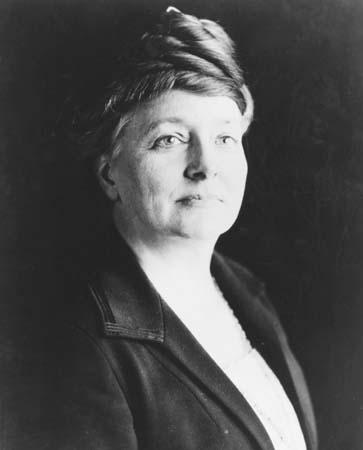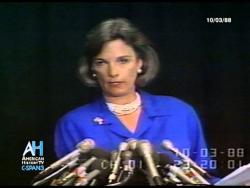What is the History of the League of Women Voters?
 In her address to the National American Woman Suffrage Association's (NAWSA) 50th convention in St. Louis, Missouri, President Carrie Chapman Catt proposed the creation of a "league of women voters to finish the fight and aid in the reconstruction of the nation." Women Voters was formed within the NAWSA, composed of the organizations in the states where suffrage had already been attained. The next year, on February 14, 1920 - six months before the 19th amendment to the Constitution was ratified - the League was formally organized in Chicago as the national League of Women Voters. Catt described the purpose of the new organization:
In her address to the National American Woman Suffrage Association's (NAWSA) 50th convention in St. Louis, Missouri, President Carrie Chapman Catt proposed the creation of a "league of women voters to finish the fight and aid in the reconstruction of the nation." Women Voters was formed within the NAWSA, composed of the organizations in the states where suffrage had already been attained. The next year, on February 14, 1920 - six months before the 19th amendment to the Constitution was ratified - the League was formally organized in Chicago as the national League of Women Voters. Catt described the purpose of the new organization:"The League of Women Voters is not to dissolve any present organization but to unite all existing organizations of women who believe in its principles. It is not to lure women from partisanship but to combine them in an effort for legislation which will protect coming movements, which we cannot even foretell, from suffering the untoward conditions which have hindered for so long the coming of equal suffrage. Are the women of the United States big enough to see their opportunity?"
 Maud Wood Park became the first national president of the League and thus the first League leader to rise to the challenge. She had steered the women's suffrage amendment through Congress in the last two years before ratification and liked nothing better than legislative work. From the very beginning, however, it was apparent that the legislative goals of the League were not exclusively focused on women's issues and that citizen education aimed at all of the electorate was in order.
Maud Wood Park became the first national president of the League and thus the first League leader to rise to the challenge. She had steered the women's suffrage amendment through Congress in the last two years before ratification and liked nothing better than legislative work. From the very beginning, however, it was apparent that the legislative goals of the League were not exclusively focused on women's issues and that citizen education aimed at all of the electorate was in order.
 The League (LWV) was an organization born immediately after the 19th Amendment made the women's suffrage movement obsolete. Now granted the right to vote, the suffrage movement looked to encourage women to "use their new power to participate in shaping public policy" [source: LWV]. In 1975, the coalition used its power to become the hosts of the 1976 presidential debates. LWV continued to sponsor these debates until 1988 (to learn about the ending of LWV sponsorship, view this video of Nancy Neuman, president of LWV at that time.
The League (LWV) was an organization born immediately after the 19th Amendment made the women's suffrage movement obsolete. Now granted the right to vote, the suffrage movement looked to encourage women to "use their new power to participate in shaping public policy" [source: LWV]. In 1975, the coalition used its power to become the hosts of the 1976 presidential debates. LWV continued to sponsor these debates until 1988 (to learn about the ending of LWV sponsorship, view this video of Nancy Neuman, president of LWV at that time.
For additional information, see the History section of the League of Women Voters of the US website.